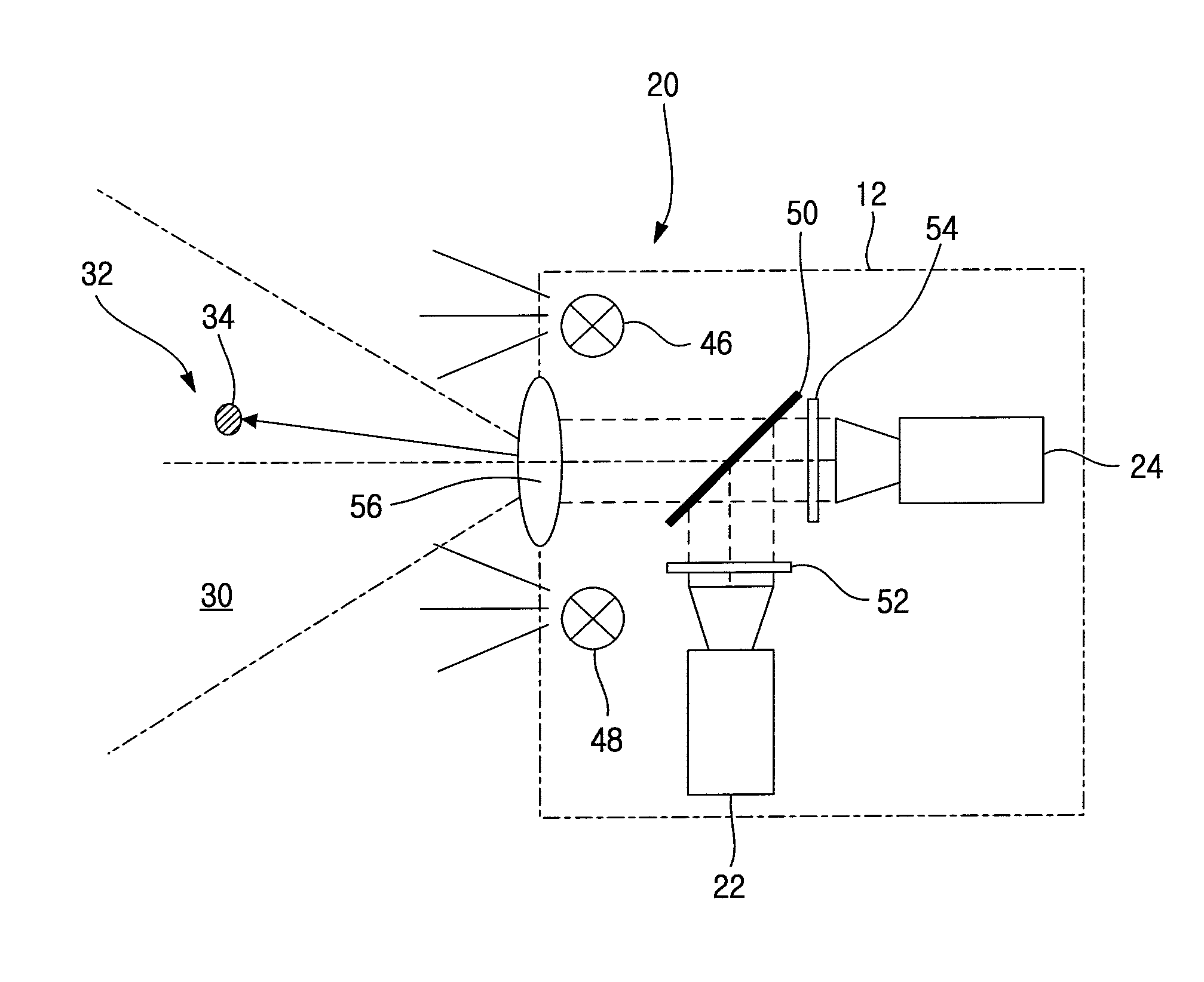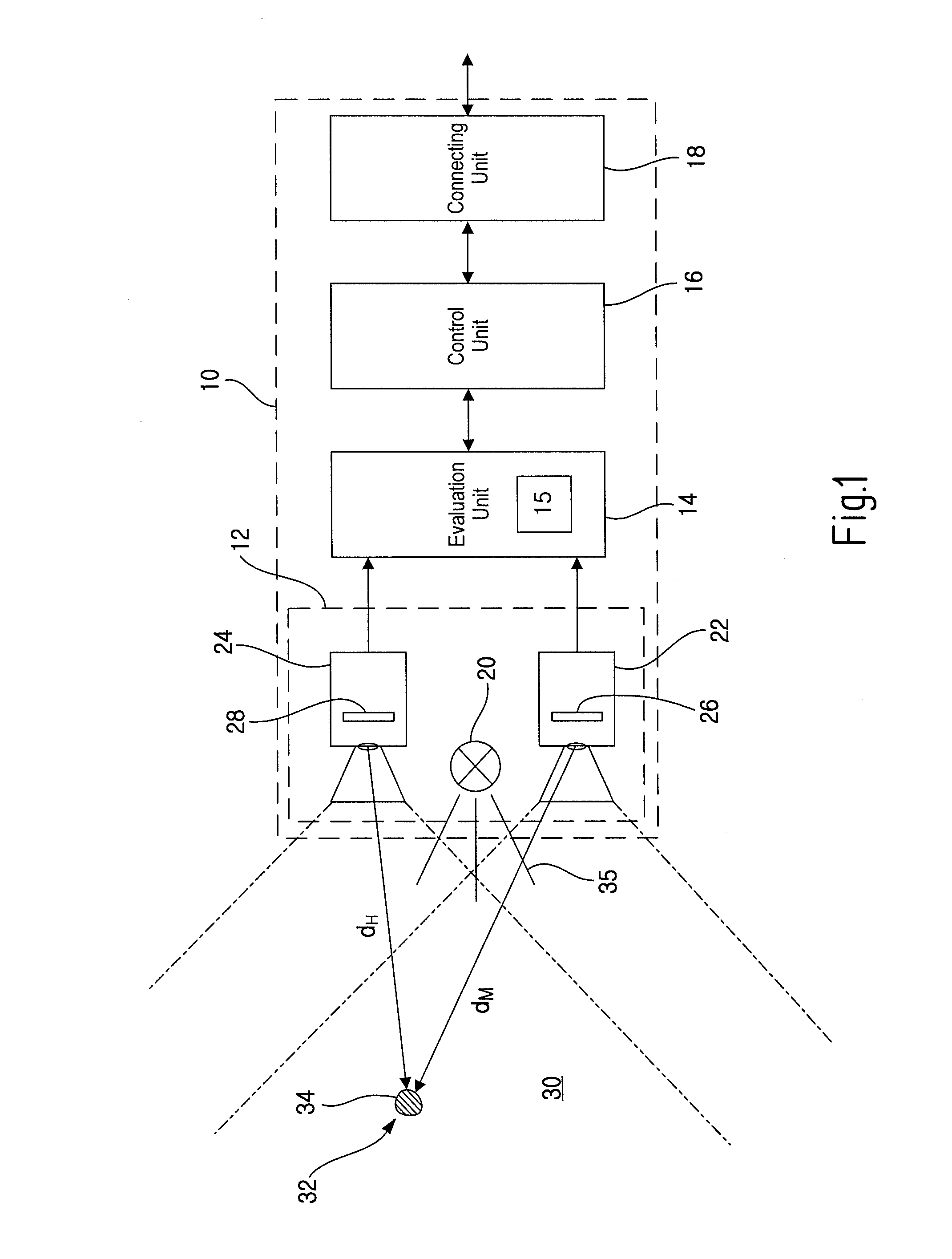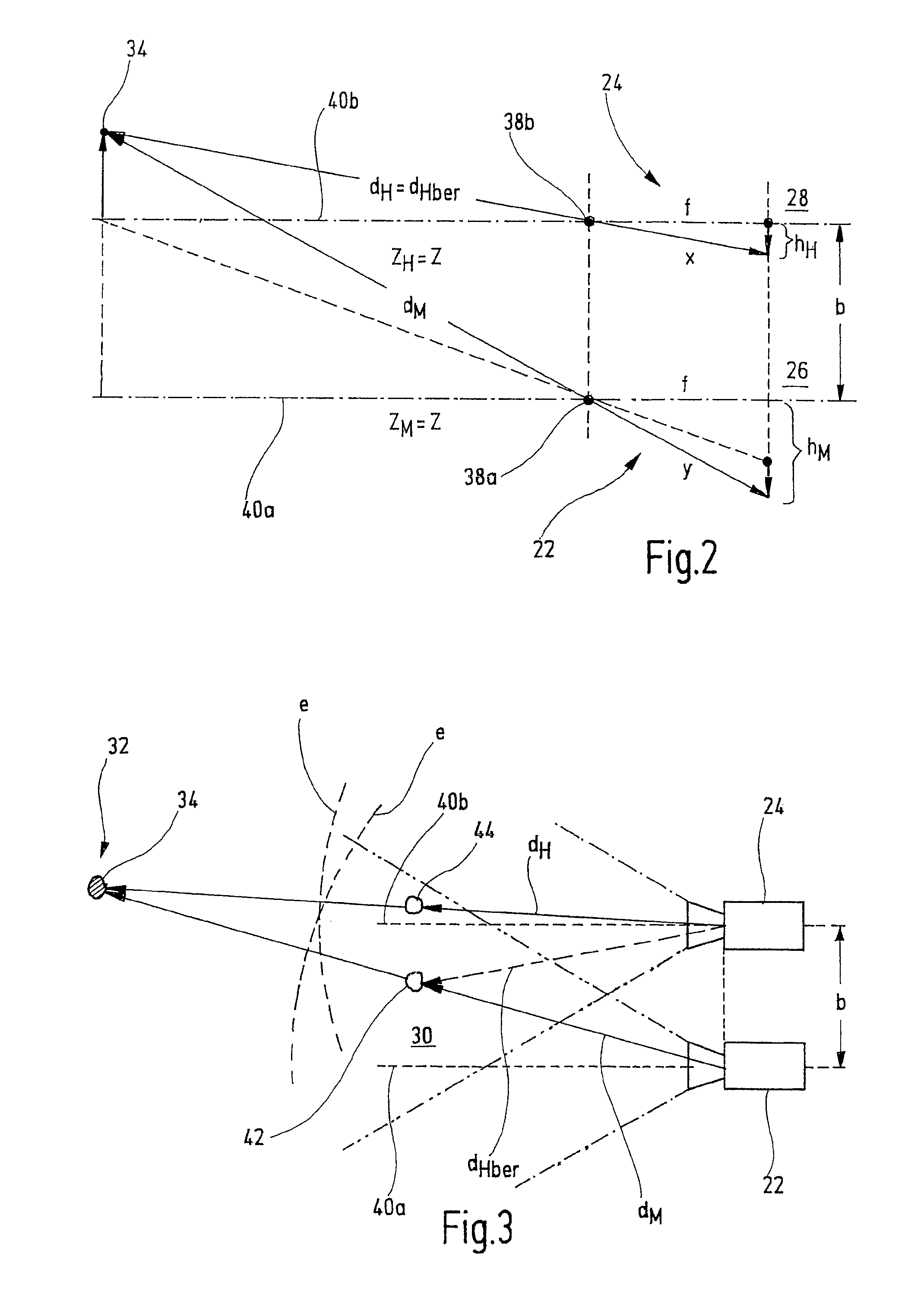Apparatus and method for monitoring a spatial area, in particular for safeguarding a hazardous area of an automatically operated installation
a technology for automatically operating installations and apparatus, applied in the field of apparatus and a method for monitoring a spatial area, can solve the problems of limited extent, rather complex installation of light barriers, apparatus and methods, etc., and achieve the effect of increasing failsafety and little complexity
- Summary
- Abstract
- Description
- Claims
- Application Information
AI Technical Summary
Benefits of technology
Problems solved by technology
Method used
Image
Examples
Embodiment Construction
[0041]In FIG. 1, an exemplary embodiment of an apparatus according to the invention is designated in its entirety by reference number 10.
[0042]The apparatus 10 comprises a sensor part 12, an evaluation unit 14 including a test device 15, a control unit 16, and a connecting unit 18. The sensor part 12 has an illumination device 20, a first camera 22 and a second camera 24. The first camera 22 comprises a first image sensor 26, and the second camera 24 comprises a second image sensor 28, with each image sensor 26, 28 having a plurality of pixels arranged like a matrix with respect to one another. In addition, each camera has imaging optics, which define an optical coverage range. The two coverage ranges of the first and second camera 22, 24 are illustrated by dashed-dotted lines, with a common coverage range 30 resulting from the overlap of the individual coverage ranges of the two cameras being symbolically represented by a dashed-double-dotted line. An object 32 is located within th...
PUM
 Login to View More
Login to View More Abstract
Description
Claims
Application Information
 Login to View More
Login to View More - R&D
- Intellectual Property
- Life Sciences
- Materials
- Tech Scout
- Unparalleled Data Quality
- Higher Quality Content
- 60% Fewer Hallucinations
Browse by: Latest US Patents, China's latest patents, Technical Efficacy Thesaurus, Application Domain, Technology Topic, Popular Technical Reports.
© 2025 PatSnap. All rights reserved.Legal|Privacy policy|Modern Slavery Act Transparency Statement|Sitemap|About US| Contact US: help@patsnap.com



